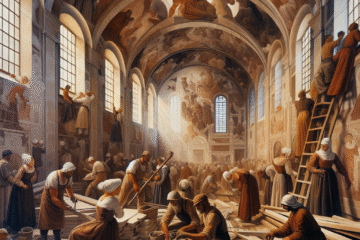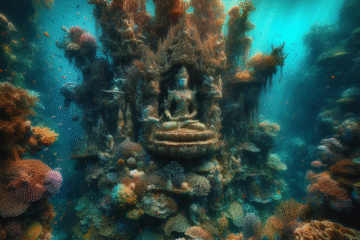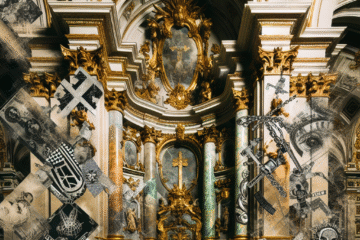Introduction: Art as a Mirror of Human Consciousness
From the moment early humans etched images on cave walls, visual art has served as much more than mere decoration—it has been a mirror of collective consciousness, a vessel for spiritual yearning, and a chronicle of societal change. Over millennia, as humans evolved, so too did their tools, beliefs, and modes of expression, leading to an extraordinary journey of artistic transformation. From soot and stone to pixels and blockchain, the story of visual art is a chronicle of technology, philosophy, and culture grippingly intertwined. Let us embark on a sweeping overview of how art has transformed over time, observing how each turning point reflects the spirit and the intellect of its age.
1. The Dawn of Creativity: Prehistoric and Ancient Art
The earliest known artworks, such as the cave paintings at Lascaux in France and rock engravings in Sulawesi, Indonesia, date back over 30,000 years. Created with natural pigments and primitive tools, these images of animals, human hands, and symbolic forms reveal humanity’s first attempt to communicate and understand the world. The art of this era served ritualistic and spiritual functions, blurring the line between the material and the metaphysical.
As civilizations emerged in Mesopotamia, Egypt, India, and Mesoamerica, art evolved into a sophisticated language intertwined with religion and power. Monumental sculptures, temple reliefs, and narrative frescoes illustrated mythologies, divine authority, and cosmology. Here, artists acted not as individuals but as conduits for divine order, producing works that were more communal than personal.
2. Classical Ideals and the Birth of Aesthetics
In ancient Greece and later Rome, art took on new meanings. While still serving religious and political functions, Greek art began to exalt the human form and explore proportion, harmony, and beauty. Sculptors like Phidias celebrated anatomical realism and idealized human figures, while philosophers such as Plato and Aristotle engaged in debates about mimesis, aesthetics, and the value of art as imitation of reality.
Roman artists advanced this legacy, mastering fresco, mosaic, and portraiture. Art became increasingly personalized, with wealthy patrons commissioning pieces to assert status and identity. The human figure achieved new prominence, setting the stage for a long-lasting fascination with form, volume, and perspective in Western art.
3. The Renaissance and the Human Spirit
The Renaissance, beginning in Italy in the 14th century, marked a cultural rebirth drawing from classical antiquity while incorporating new scientific and philosophical ideals. The invention of linear perspective by Filippo Brunelleschi revolutionized spatial representation. Figures like Leonardo da Vinci and Michelangelo merged technical mastery with profound meditation on humanity and nature, presenting art as a path to truth and self-knowledge.
At the same time, the role of the artist transformed. No longer mere craftsmen, artists began to be recognized as intellectuals and visionaries. The philosophical humanism of the era encouraged a focus on individual expression, physical realism, and emotional depth. Art was no longer just about serving external powers—it was now a means of personal and cultural exploration.
4. Modernism and the Shattering of Illusions
The 19th and 20th centuries were periods of seismic shifts in both society and art. Industrialization, urbanization, and global conflict shattered previous certainties. In response, artists began to question reality, tradition, and the very purpose of art. Movements such as Impressionism, Cubism, Expressionism, and Surrealism challenged linear perspective and mimetic function. The internal world—the subconscious, the emotional, the abstract—began to surface.
Artists like Pablo Picasso, Marcel Duchamp, and Jackson Pollock blew open the definitions of art. Duchamp’s readymades, like his infamous signed urinal “Fountain” (1917), questioned authorship and the institutional framing of art. At the same time, technological advancements such as photography and film began to rival traditional forms, shifting the role of the artist from observer to creator of new realities. Art became an intellectual pursuit, a provocation, and often, a rebellion.
5. Digital Frontiers: From Computer Art to AI and NFTs
As the digital age unfolded in the late 20th century, a new chapter emerged. Computer-generated art, once the domain of experimental programmers, gradually entered mainstream consciousness. The 1980s and 1990s saw digital abstraction, algorithmic patterns, and early virtual installations. As the internet matured, so too did its artistic applications—from net.art and online collectives to meme culture and glitch aesthetics.
In the 21st century, artists began harnessing artificial intelligence, machine learning, and blockchain technology, reshaping not just how art is made but how it is valued and shared. Generative AI art, such as works by Robbie Barrat or Refik Anadol, explores the convergence of code and creativity. Meanwhile, NFTs (non-fungible tokens) have introduced a radical frontier in authorship, ownership, and provenance. With projects like Beeple’s $69 million digital collage and generative platforms like Art Blocks, the art world is grappling anew with issues of authenticity, scarcity, and democratization.
These technologies have reignited philosophical debates: What is authorship in an age of algorithms? Can a machine be creative? Is digital permanence a paradox? While some dismiss these as fleeting trends, others view them as a renaissance of conceptual art, echoing Duchamp’s provocations but in an entirely new medium.
Conclusion: The Eternal Flux of Art
Art’s evolution—from handprints in ancient caves to blockchains in cyberspace—reveals a constant negotiation between the human spirit, its tools, and its environment. While the mediums and messages have transformed, the underlying impulse remains: to communicate, to question, to connect. Each turning point in visual art reflects broader societal transformations and philosophical shifts.
As we stand on the cusp of ever-more immersive technologies—augmented reality, the metaverse, and beyond—art continues to be a laboratory of human possibility. In a world both saturated with images and driven by innovation, visual art remains a powerful reminder not just of where we have been, but of where we might yet go.


